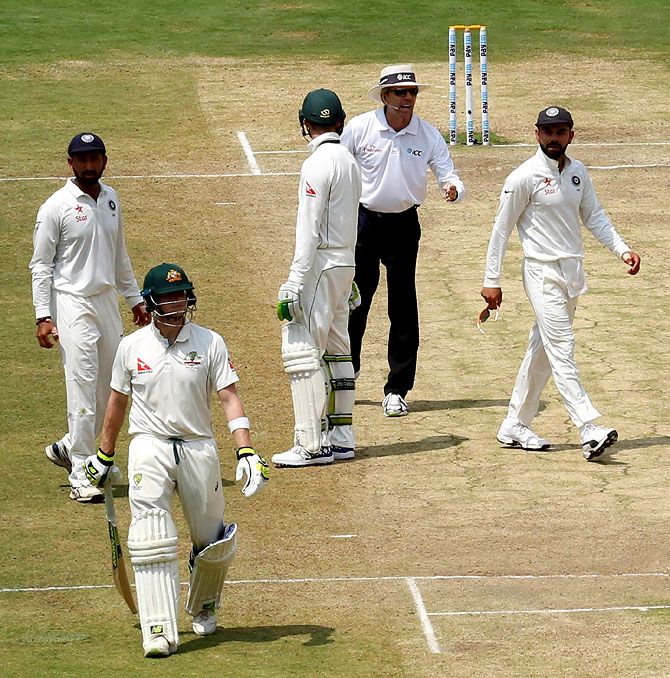Umpires can eject players, tethered bails approved

Cricket umpires have been given the power to eject disobedient players while tethered bails will be permitted to protect wicket-keepers from eye injuries as part of a series of law changes coming into effect from October 1.
The new 'Players conduct' rule will allow on-field officials to remove a misbehaving competitor temporarily or permanently and award five penalty runs to the opposition, the Marylebone Cricket Club (MCC) has said.
If a captain refuses to remove his offending player, the umpire can award the match to the opposition. If both captains refuse to comply, the contest can be abandoned.
The MCC, the custodians of the game's laws, also merged "handled the ball" offence with "obstructing the field", thus reducing the number of possible dismissals from 10 to nine.
It also ratified the proposal of tethered bails to protect wicketkeepers from the type of injuries that ended South African Mark Boucher's career in 2012.
Boucher was hit in the eye by flying bails in a tour match in England, which forced him into retirement.
Former India wicketkeeper Saba Karim's career also ended after he had a similar injury during an Asia Cup encounter against Bangladesh in Dhaka in 2000. It was a ball from Anil Kumble that struck the batsman on the boot and rose to hit Karim on the right eye.
Former India skipper Mahendra Singh Dhoni also was hit by the bail on his right eye while trying to go for a big shot in the final T20I against Zimbabwe last year but no damage was done.
"Law 8.4 has been changed, to help prevent injuries, to allow specially designed mechanisms which tether the bails to the stumps, thereby restricting the distance that they can fly off the stumps but without limiting their ability to be dislodged," the MCC said.
MCC has decided to alterate Law 8.3, following an approach from two companies -- one from South Africa and the other from the UK -- who have submitted designs for mechanisms that tether the bails to the stumps, without limiting their ability to be dislodged.
"If it prevents someone losing their eyesight, it's got to be worth considering," Fraser Stewart, MCC's Laws Manager told ESPNcricinfo.
"The companies involved are still working on their patents, so this is very much a work in progress, but what MCC have done is make such devices permissible in the Laws. After that, it is up to the governing bodies to allow for their use."
Law 8.3.4 now reads: "Devices aimed at protecting player safety by limiting the distance that a bail can travel off the stumps will be allowed, subject to the approval of the Governing Body for the match and the ground authority."
The UK version, designed by Gus Kennedy, a former Oxford and Cambridge MCCU wicketkeeper, comprises of two holes, drilled down into the off and leg stumps, and a tiny, lightweight ball, attached to a piece of cotton.
The ensemble rests on a platform, so that there is no weight pulling on the bail, which is then able to travel no further than three inches when the stumps are put down.
The MCC also approved bat restrictions and allowed substitutes to keep wicket.











